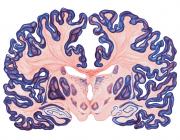A brief comparative review of primate posterior parietal cortex: A novel hypothesis on the human toolmaker.
Publication Year
2017
Type
Journal Article
Abstract
The primate visual system contains two major cortical pathways: a ventral-temporal pathway that has been associated with object processing and recognition, and a dorsal-parietal pathway that has been associated with spatial processing and action guidance. Our understanding of the role of the dorsal pathway, in particular, has greatly evolved within the framework of the two-pathway hypothesis since its original conception. Here, we present a comparative review of the primate dorsal pathway in humans and monkeys based on electrophysiological, neuroimaging, neuropsychological, and neuroanatomical studies. We consider similarities and differences across species in terms of the topographic representation of visual space; specificity for eye, reaching, or grasping movements; multi-modal response properties; and the representation of objects and tools. We also review the relative anatomical location of functionally- and topographically-defined regions of the posterior parietal cortex. An emerging theme from this comparative analysis is that non-spatial information is represented to a greater degree, and with increased complexity, in the human dorsal visual system. We propose that non-spatial information in the primate parietal cortex contributes to the perception-to-action system aimed at manipulating objects in peripersonal space. In humans, this network has expanded in multiple ways, including the development of a dorsal object vision system mirroring the complexity of the ventral stream, the integration of object information with parietal working memory systems, and the emergence of tool-specific object representations in the anterior intraparietal sulcus and regions of the inferior parietal lobe. We propose that these evolutionary changes have enabled the emergence of human-specific behaviors, such as the sophisticated use of tools.
Journal
Neuropsychologia
Volume
105
Pages
123-34
Date Published
01/2017
ISSN Number
1873-3514
Alternate Journal
Neuropsychologia
PMID
28159617

